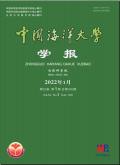中国海洋大学学报(自然科学版)2024,Vol.54Issue(1):79-85,7.DOI:10.16441/j.cnki.hdxb.20220399
1-苯基2-硫脲通过p53调控自噬活性来保护斑马鱼神经丘毛细胞
1-Phenyl 2-Thiourea Protects Hair Cells in Zebrafish Neuromast by Regulating Autophagy Through p53
摘要
Abstract
To illustrate the relationship between autophagy and hair cell survival,we labeled the neuro-mast in zebrafish with Lyso Tracker to track the autophagy in vivo.We found that 1-phenyl 2-thiourea(PTU)treatment induced the Lyso Tracker signaling enhancement in hair cells specifically,and also re-sulted in an increase in the number of hair cells and the expression of tp53 gene.To clarify the survival and protection mechanisms of hair cells,we constructed the tp53 mutant zebrafish by CRISPR/Cas9 technology.The tp53 mutation did not affect the number of hair cells in neuromast.However,the tp53 mutation reduced the enhancement of autophagy in hair cell induced by PTU,and lowered the number of hair cells increased by PTU treatment.Our evidence shows that PTU can promote autophagy in hair cells of lateral line neuromast in zebrafish by upregulating the expression of tp53 gene,thereby promo-ting the survival of hair cells,laying an important foundation for hair cell protection.关键词
tp53基因/侧线系统/毛细胞/细胞自噬/苯基硫脲Key words
tp53 gene/lateral line system/hair cell/cell autophagy/1-phengl 2-thiourea分类
水产学引用本文复制引用
秦彦筠,范纯新,王建..1-苯基2-硫脲通过p53调控自噬活性来保护斑马鱼神经丘毛细胞[J].中国海洋大学学报(自然科学版),2024,54(1):79-85,7.基金项目
国家自然科学基金面上项目(31772406)资助 Supported by the General Program of National Natural Science Foundation of China(31772406) (31772406)

